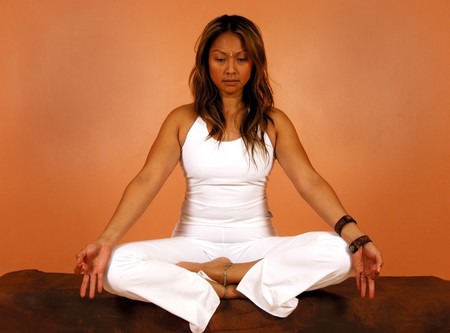Meditation can take many forms. In its purest form, it is a Buddhist religious practice, but anyone can use the technique of meditation, and it need not be religious. It is a form of mental concentration that frees you from your usual mental processes. Some people say that meditation, if practiced consistently, can change your life.
Most people don’t want to take meditative techniques that far; they just want a short mental vacation during the middle or at the end of a busy stressed-out day. Meditation does that by helping you to block out the outside world and taking you deep into your inner self.

The two types of Eastern meditation that are best known in the West are transcendental meditation (TM) and Zen meditation. The former constricts your attention when you repeat a word or a sound (mantra) over and over as you sit with your eyes closed. In Zen meditation, you sit with your eyes open and concentrate on your breathing.
General rules of meditation include doing it in the same quiet place every day when you will not be interrupted, preferably at the same time each day, and sitting in the full lotus or half lotus position. Meditating after eating or before going to bed is not recommended. Practitioners of meditation say you should start with brief periods—five minutes or so and gradually increase to twenty or thirty minutes. You should not skip days, and if you really think you don’t have time to meditate, it is better to do it for only five minutes than not at all.
If you are going to practice TM, first choose your mantra, a short (no more than one or two syllables) sound that you hear as harmonious and melodious. Then go to your chosen spot, assume your position (if lotus or half lotus is too uncomfortable, just sit), take a few deep breaths to quiet yourself, close your eyes, and begin repeating your mantra over and over slowly and silently. If other thoughts come into your mind, don’t push them away deliberately. Rather, let them flow through without letting up on your mantra concentration. Soon you will find yourself in a state of “suspended isolation” in which you neither think nor do. This is meditation. When you are finished, stop repeating your mantra, sit with your eyes closed for a few minutes longer and then open your eyes, stretch as you would when awakening, and go about your day.

Zen meditation requires that you use the full or half lotus position on the forward part of a straight chair. Your spine should be straight and the small of your back concave. Pull your chin in; and put your hands in your lap, thumbs touching, turned up with the left hand inside the right (opposite if you are left handed). With your eyes open but unfocused, look at a spot about three feet in front of you and downward. Move your torso in a wide arc back and forth a few times and stop at your natural center where you feel comfortable. Sit quietly and concentrate your mind on the rhythm of your breathing. As in TM, don’t pay attention to the other thoughts that come into your mind; rather, concentrate on your breathing. You can count one-two as you inhale and exhale if it helps you concentrate, but soon you won’t need to do even that.